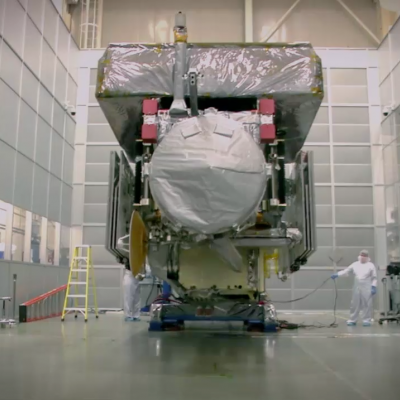Core Observatory Commissioning Continues
The Global Precipitation Measurement mission's Core Observatory commissioning activities continued normally this week. Both the GPM Microwave Imager and the Dual-frequency Precipitation Radar (DPR) are collecting science data and NASA and the Japan Aerospace Exploration Agency released the first images from the instruments on March 25. The DPR's functional checkout activities and internal calibration continued. The first external calibration using the Active Radar Calibration site in Tsukuba, Japan, was performed on March 23. A 120-second "Delta-V" burn was successfully completed Wednesday





